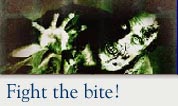Zombies: A Record of the Year of Infection is an illustrated journal of a zombie plague that struck the world on January 7, 2012. The journal's author, Dr. Robert Twombly, is a blood specialist who is hopefully in a position to explain the zombie plague. Right? Why else would you make a scientist the protagonist?
Things go south in the very next sentence: "The infection lasted approximately one year, and during that time all known zombies either decayed enough to succumb to their physical limitations or were destroyed by pockets of human survivors."
Imagine the scrolling text in the beginning of Star Wars reading: "A long time ago in a galaxy, far, far away…The Empire was eventually defeated by the Rebellion." The end.
The challenge for a book or movie (like Paranormal Activity and The Blair Witch Project) that act as if the events are real is in immersion – the reader has to believe they're in the moment. This takes a lot of work. To make something scary requires the observer to become absorbed enough to empathize with the protagonist. Giving away that the plague ended isn't relevant – the ending of the book has nothing to do with world events. So giving us that tidbit of information (in the prologue and on the back cover) saps the book of any sense of urgency or dread.
This would all be forgivable if Zombies contributed something different to the zombie genre. It doesn't: zombies are slow but strong in numbers, travel in packs, and can only be stopped by destroying the head.
The other important part of a zombie narrative is the eccentric survivors. But Zombies doesn't have anything to offer here either: inhuman gun-toting nut jobs, tough-as-nails survivalists, an isolated community convinced it's safe, the pathetic zombie slave, the noble dog, a creepy old lady alone in her house…it's like someone used the 8-Ball of Horror, shook it up a few times, and wrote a comic.
Our protagonist does everything from running experiments on infected blood to breaking into the company's research facility (Primodine) that supposedly created the infection. And he comes up with nothing. A golden opportunity to provide some pathology for how zombies work and the book glosses over it.
The artwork is of variable quality, reflecting the supposedly rushed nature of a scientist on the run. It's mostly watercolor, with lots of red and grays. Although it's supposedly handwritten, the text is actually a font. Fortunately, the font is suitably unobtrusive. What's much more annoying is the various scribbles where the author wrote something, thought better about it, and scratched it out. It gets annoying fast.
It's not all bad. There are some band mates that are interesting, which leads to an awesome illustration of a zombie getting axed by a guitar. Birds aren't afraid of zombies, so we get a great picture of a bird sitting on a zombie's head with an eyeball dangling from its beak. But none of these elements make up for the fact that Zombies has nothing new to share about zombies.
Labels: Zombie Reviews





0 Comments:
Post a Comment
<< Home